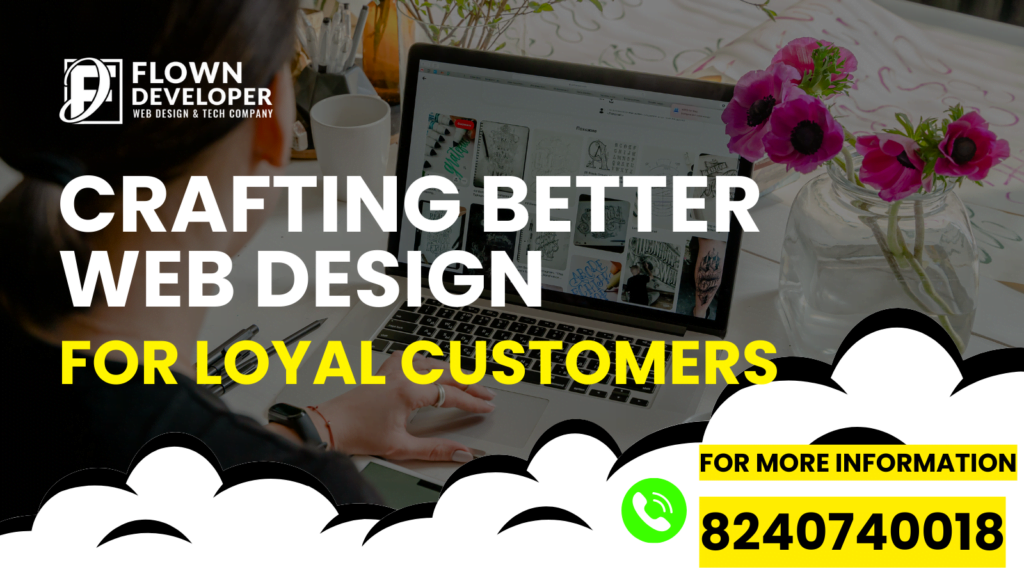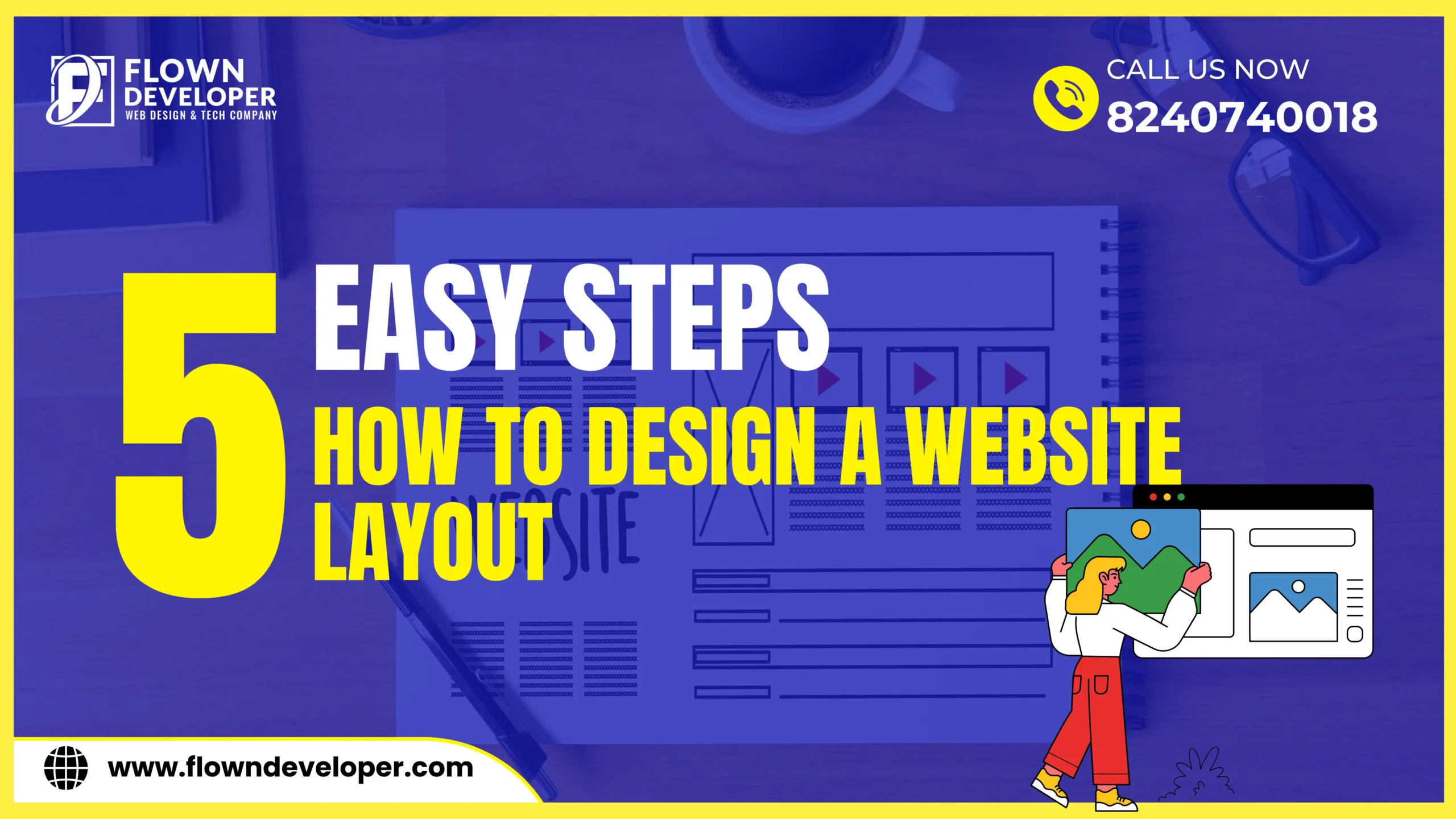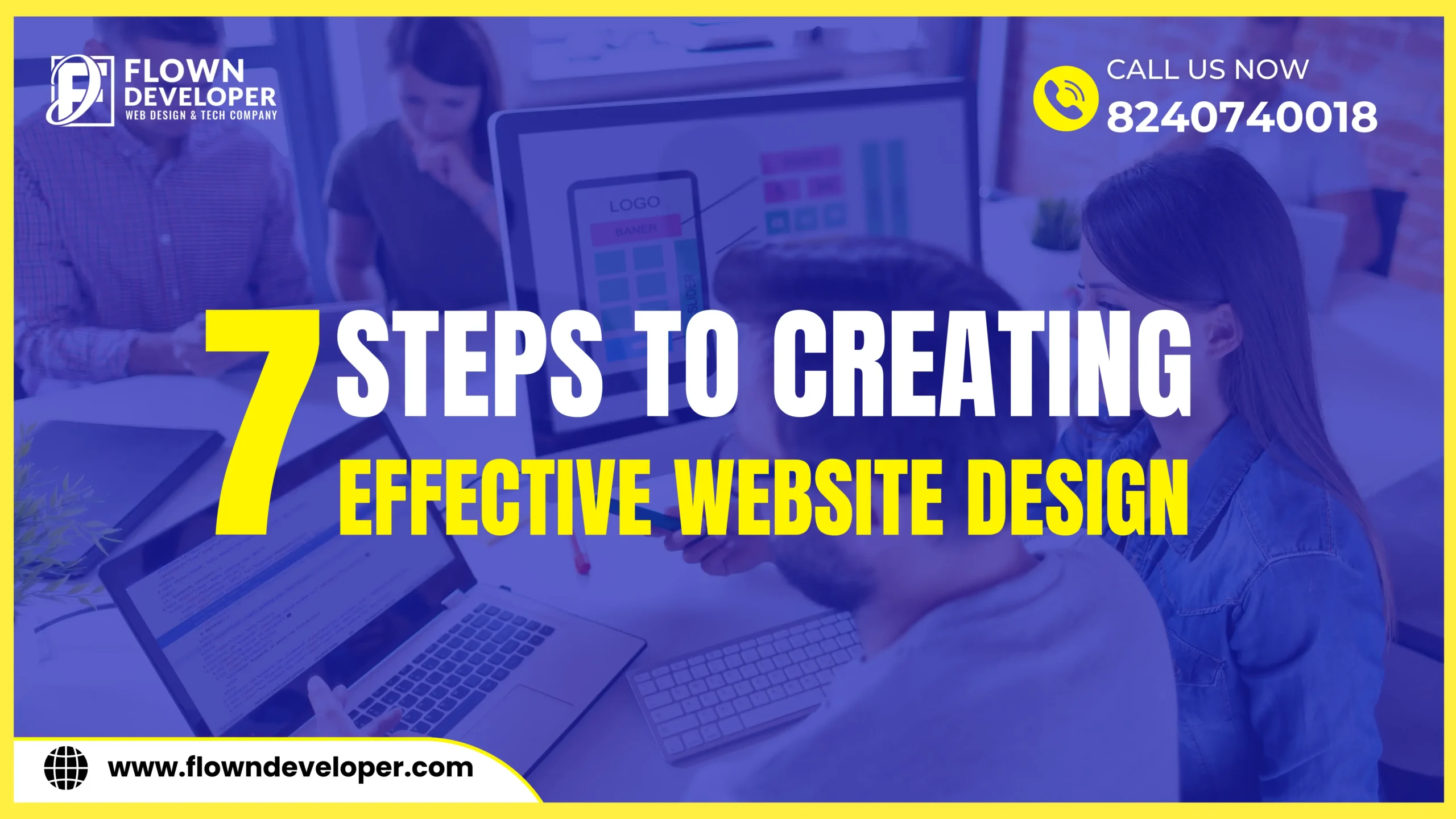Unlocking the Secrets to Crafting Better Web Design for Loyal Customers
Unlocking the Secrets to Crafting Better Web Design for Loyal Customers is essential in today’s digital age. A well-designed website captivates visitors and encourages them to stay, explore, and ultimately convert into loyal customers. This comprehensive guide will delve into the intricacies of creating web designs that resonate with your audience, foster trust, and drive customer loyalty.
Introduction
In a world of digital noise, a user-friendly and visually appealing website can be the difference between a fleeting visitor and a devoted customer. Crafting a web design tailored to your audience’s needs and preferences is the first step toward building lasting customer loyalty. A well-designed website is crucial in today’s highly competitive digital world. With so much online information and content, it is essential to stand out and engage users effectively. A website that is easy to use can be a significant factor in ensuring a positive user experience. When visitors can quickly find what they are looking for, they are likelier to remain on the site and become loyal customers. A user-friendly and well-designed website can make navigating the site a pleasant experience, thus increasing the chances of customers making a purchase.
One of the critical aspects of a successful web design is tailoring it to your target audience’s specific needs and preferences. Gaining insight into your target audience’s demographics, interests, and online habits can be instrumental in designing a website that they can relate to and feel seen by. By recognizing the preferences and choices of your user base, you can create a design that resonates with them and allows them to feel understood.
By incorporating elements that resonate with your audience, such as colors, images, and typography, you can create a visually appealing website that captures their attention and reflects your brand identity. A visually captivating and uniform design can drastically enhance the user experience, prompting visitors to delve further into the content of your website. A harmonious design that is visually pleasing and cohesive is essential for making a positive impression on website visitors.
Furthermore, a user-friendly design ensures visitors can easily find the information or products they seek. Intuitive navigation, clear calls to action, and well-structured content help users navigate your website effortlessly. A streamlined user experience reduces frustration and encourages visitors to stay longer, increasing their chances of becoming loyal customers.
In addition to aesthetics and usability, a well-crafted web design also considers the site’s functionality and responsiveness across different devices. With the rise of mobile browsing, your website must be mobile-friendly and provide a seamless experience on smartphones and tablets. A responsive design ensures your site adapts to various screen sizes and resolutions, optimizing user experience and engagement.
Investing in a user-friendly and visually appealing web design sends a powerful message to your audience. It shows that you value their time, preferences, and experience, creating a positive impression and building trust. By keeping up with the latest trends in website design and regularly taking into account customer feedback, you can ensure that your website stays ahead of the pack and helps build lasting loyalty from your customers.
Understanding User Behavior
To unlock the secrets of crafting better web design, it’s crucial to understand the behavior of online users.
Research indicates that website visitors form an opinion about a website almost instantaneously, with the perception created in as little as 50 milliseconds.
This means that first impressions are not just important; they’re everything.
If a website fails to make a positive first impression, users will likely leave and never return.
To ensure success, web designers must prioritize crafting an interface that is visually pleasing and easy to use to quickly draw in the user’s interest.
One key aspect to keep in mind is the use of color.
Research has shown that different colors evoke different emotions and can significantly impact how users perceive and engage with a website.
Understanding color psychology can help designers choose the suitable color scheme to elicit the desired emotional responses and create a cohesive visual experience.
Another crucial element is the layout of the website.
Studies have found that users prefer websites that follow predictable and familiar design patterns.
This means that designers should stick to standard conventions, such as placing the logo at the top left corner, having a straightforward navigation menu, and consistently placing elements throughout the site.
In addition, it’s essential to optimize the loading speed of a website.
Individuals anticipate web pages loading rapidly and will likely leave a website if it takes less time.
Designers can achieve this through various techniques, such as optimizing image sizes, compressing files, and minimizing unnecessary scripts and plugins.
Furthermore, the use of visual hierarchy can significantly improve user experience.
By emphasizing essential elements through size, color, and placement, designers can guide users’ attention and help them navigate the website more easily.
One way to ensure that your content stands out is to use distinct headings, bold colors, and careful positioning of crucial points.
Utilizing these tactics will make your content eye-catching and easy to read.
Furthermore, strategically placed visuals can help to bolster the understanding of the material.
This will make readers more likely to absorb the information you are trying to convey.
Finally, web designers need to prioritize responsive design.
As mobile devices become more widespread and the primary choice for accessing the web, websites need to be able to adjust to multiple screen sizes and resolutions.
This is crucial for ensuring that websites can perform optimally on all devices.
Adapting quickly and proficiently to the continuously evolving environment is critical to success in the present digital sphere.
Rapidly adjusting to new influences and trends is indispensable if one wishes to thrive in this modern digital landscape.
Responsive design enables websites to be viewed seamlessly regardless of the device used, creating a positive user experience and ultimately leading to better business results.
By ensuring that the design is optimized for various devices, users can have a seamless experience regardless of their device.
Responsiveness is critical when it comes to delivering the best possible user experience.
In conclusion, crafting superior web design requires a deep understanding of user behavior.
By creating visually appealing designs, optimizing loading speeds, utilizing color psychology, adhering to familiar design patterns, employing visual hierarchy, and implementing responsive design, designers can unlock the secrets to creating more compelling and successful websites.
The Power of Intuitive Navigation
Navigation is the backbone of user experience.
A seamlessly structured website with intuitive menus and clear pathways enhances user satisfaction and keeps them engaged.
Consider implementing breadcrumb trails, easy-to-access menus, and prominent CTAs to guide your visitors seamlessly through your site.
Breadcrumb trails are a great way to show users their current location in relation to the overall structure of the website.
Users can quickly move back to the former pages or investigate different parts of the website.
Easy-to-access menus should be placed in a prominent location, such as at the top of the page or in a sidebar.
They should be organized logically and feature clear labels to help users find what they are looking for.
Prominent calls-to-action (CTAs) should be strategically placed throughout the website to guide users to take the desired action.
Whether it is to sign up for a newsletter, make a purchase, or contact the company, CTAs should be visually appealing and easily clickable.
In addition to these elements, it is important to ensure that the navigation system is consistent across all pages of the website.
This helps users orient themselves and reduces confusion.
The importance of a properly constructed and easy-to-use navigation system cannot be overstated when it comes to improving user satisfaction, boosting engagement on a website, and providing a positive user experience.
A great navigation system is key to achieving these goals.
Mobile Responsiveness: A Non-Negotiable
Ensuring your website is mobile-responsive in an era dominated by mobile devices is paramount. A design that adapts flawlessly to various screen sizes enhances user experience and positively impacts SEO rankings. As the number of people accessing the web from their mobile devices continues to climb, it has become essential that websites are designed with mobile responsiveness in mind. With over half of all internet users browsing the web from their mobile phones and tablets, it is now more critical than ever for websites to be optimized for these platforms. This is a dramatic shift from the past when desktop computers were the primary way to access the internet. If your website is not optimized for mobile, you may miss out on many of your potential audience. Neglecting to optimize a website for mobile devices can lead to a subpar user experience, making visitors unlikely to return. Making sure to optimize your website for mobile devices is essential for providing an enjoyable experience for users.
A mobile-friendly design is essential to ensure your site is optimized for viewing on any device, from a smartphone to a tablet to a desktop computer. Providing that your website is designed to be optimized for any screen size will guarantee that it looks great and performs flawlessly. This adaptability is achieved through flexible layouts, fluid images, and media queries.
By providing a user-friendly experience on mobile devices, you enhance engagement and encourage visitors to stay on your site longer. This decreases the number of people leaving a website quickly and boosts the probability of achieving goals like conversions or other preferred activities.
Moreover, Google considers mobile-friendliness as a ranking factor in its search algorithm. Mobile-responsive websites rank higher in search engine results pages (SERPs) when users search from mobile devices. This increased visibility can significantly impact your website’s organic traffic and overall online visibility.
The Psychology of Color and Typography
Ensuring your website is mobile-responsive in an era dominated by mobile devices is paramount. A design that adapts flawlessly to various screen sizes enhances user experience and positively impacts SEO rankings. As the number of people accessing the web from their mobile devices continues to climb, it has become essential that websites are designed with mobile responsiveness in mind. The importance of optimizing sites for mobile phones and tablets is paramount in this day and age, as more than half of all internet users access the web from their portable devices. Businesses must ensure their websites are appropriately adapted for the mobile user experience. This is a dramatic shift from the past when desktop computers were the primary way to access the internet. If your website is not optimized for mobile, you may miss out on many of your potential audience. Neglecting to optimize a website for mobile devices can lead to a subpar user experience, making visitors unlikely to return. Making sure to optimize your website for mobile devices is essential for providing an enjoyable experience for users.
A mobile-friendly design is essential to ensure your site is optimized for viewing on any device, from a smartphone to a tablet to a desktop computer. Providing that your website is designed to be optimized for any screen size will guarantee that it looks great and performs flawlessly. This adaptability is achieved through flexible layouts, fluid images, and media queries.
By providing a user-friendly experience on mobile devices, you enhance engagement and encourage visitors to stay on your site longer. This decreases the number of people leaving a website quickly and boosts the probability of achieving goals like conversions or other preferred activities.
Moreover, Google considers mobile-friendliness as a ranking factor in its search algorithm. Mobile-responsive websites rank higher in search engine results pages (SERPs) when users search from mobile devices. This increased visibility can significantly impact your website’s organic traffic and overall online visibility.
Harnessing the Emotional Power of Colors
Colors evoke emotions and associations. For instance, blue conveys trust and professionalism, while red exudes energy and passion. You can subconsciously influence how visitors perceive your brand by strategically incorporating these elements into your web design. When constructing a website, it is essential to think about the psychological and associative effects of colors on visitors. The choices of color can evoke certain emotions and memories and greatly influence the site’s overall appeal. The selection of colors can affect how people view your brand and shape their overall experience on your website. By carefully selecting colors, you can influence how people view your brand and what kind of impression they get from visiting your site. Here are a few examples of how different colors can evoke emotions and associations:
1. Blue: Blue is commonly linked to trustworthiness, dependability, and authority. It can bring about a feeling of peace and safety. Many corporate websites, financial institutions, and technology companies incorporate blue in their design to establish a trustworthy and credible image.
2. Red: Red is a passionate and stimulating hue that can stir powerful feelings like fervor, enthusiasm, and urgency. It is a hue that can bring energy and vibrancy to any situation. It grabs attention and can effectively highlight essential elements or create a sense of urgency. Food, sports, or entertainment brands often use red.
3. Green: Green is often related to the natural world, the flourishing of life, and the feeling of rejuvenation. It is seen as a sign of hope and health. It can convey a sense of health, tranquility, and sustainability. Brands related to organic products, eco-friendly services, or outdoor activities often use green tones in their web design to align with their core values.
4. Yellow: Yellow is a bright and optimistic color that can evoke feelings of happiness, energy, and warmth. It can help create a sense of positivity and grab attention. Yellow is often used by brands related to creativity, joy, and youthfulness.
5. Orange: Orange is a warm and vibrant color that combines the energy of red and the friendliness of yellow. It can create a sense of enthusiasm, motivation, and excitement. Brands that want to convey a sense of fun, creativity, and affordability often incorporate orange in their design.
6. Purple: Purple is often associated with luxury, royalty, and creativity. It can convey a sense of elegance, indulgence, and mystery. Brands related to beauty, art, or high-end products might use shades of purple to create a sense of sophistication.
These are just a few examples, and it is essential to consider cultural and personal variations in color associations. By carefully considering the colors incorporated into your web design, you can evoke the desired emotions and successfully communicate the identity and ideals of your brand.
Typography: Balancing Legibility and Aesthetics
Colors evoke emotions and associations. For instance, blue conveys trust and professionalism, while red exudes energy and passion. You can subconsciously influence how visitors perceive your brand by strategically incorporating these elements into your web design. Creating a website involves considering colors’ psychological and emotional impacts on website viewers. It is essential to consider how the colors chosen can evoke certain feelings and reactions from visitors. By understanding the power of colors and how they can influence the user experience, website creators can ensure their site is as successful as possible. The choices of color can evoke certain emotions and memories and greatly influence the site’s overall appeal. The selection of colors can affect how people view your brand and shape their overall experience on your website. By carefully selecting colors, you can influence how people view your brand and what kind of impression they get from visiting your site. Here are a few examples of how different colors can evoke emotions and associations:
1. Blue: Blue is commonly linked to trustworthiness, dependability, and authority. It can bring about a feeling of peace and safety. Many corporate websites, financial institutions, and technology companies incorporate blue in their design to establish a trustworthy and credible image.
2. Red: Red is a passionate and stimulating hue that can stir powerful feelings like fervor, enthusiasm, and urgency. It is a hue that can bring energy and vibrancy to any situation. It grabs attention and can effectively highlight essential elements or create a sense of urgency. Food, sports, or entertainment brands often use red.
3. Green: Green is often related to the natural world, the flourishing of life, and the feeling of rejuvenation. It is seen as a sign of hope and health. It can convey a sense of health, tranquility, and sustainability. Brands related to organic products, eco-friendly services, or outdoor activities often use green tones in their web design to align with their core values.
4. Yellow: Yellow is a bright and optimistic color that can evoke feelings of happiness, energy, and warmth. It can help create a sense of positivity and grab attention. Yellow is often used by brands related to creativity, joy, and youthfulness.
5. Orange: Orange is a warm and vibrant color that combines the energy of red and the friendliness of yellow. It can create a sense of enthusiasm, motivation, and excitement. Brands that want to convey a sense of fun, creativity, and affordability often incorporate orange in their design.
6. Purple: Purple is often associated with luxury, royalty, and creativity. It can convey a sense of elegance, indulgence, and mystery. Brands related to beauty, art, or high-end products might use shades of purple to create a sense of sophistication.
These are just a few examples, and it is essential to consider cultural and personal variations in color associations. By carefully considering the colors incorporated into your web design, you can evoke the desired emotions and successfully communicate the identity and ideals of your brand.
Optimizing Page Load Speed
In today’s fast-paced world, every second counts. A website that loads swiftly improves user experience and positively impacts SEO rankings. Optimizing a website to improve its performance can be done through various methods, such as compressing images, reducing the size of CSS and JavaScript files, and setting up browser caching. By utilizing these techniques, sites can be made faster and more efficient. All of these approaches have the potential to improve the performance of a website significantly. In addition, optimizing the server response time, utilizing a content delivery network (CDN), and cutting down on the number of HTTP requests can further boost a website’s loading speed.
Compressing images is crucial as large image files can significantly slow down a website. By reducing the dimensions of pictures without losing their quality, the page load time can be decreased. There are various tools and plugins available that can help in compressing images effectively.
Reducing the dimensions of CSS and JavaScript documents is an excellent approach to increasing the speed of a website. Decreasing the file sizes can lead to quicker page loading, which improves the user experience. Additionally, the smaller files take up less storage space, which can help reduce hosting costs. The file size is reduced by eliminating all unnecessary characters, such as whitespace and comments, allowing the browser to download and process the code faster. This, in turn, increases the speed and efficiency of the website overall.
Utilizing browser caching allows the browser to store specific files from your website, so when a user revisits, the files can be retrieved from the cache instead of the server. This saves time and improves the overall loading speed.
Server response time optimization involves improving the efficiency of the server in handling incoming requests. This can be achieved through optimizing database queries, using caching mechanisms, and upgrading server infrastructure if necessary.
A Content Delivery Network (CDN) can be a great asset when attempting to spread website content over numerous servers worldwide. This service allows websites to be accessed from multiple regions, allowing for a much broader reach. This guarantees that the data is provided from the server nearest to the user, decreasing latency and boosting loading speed.
One way to enhance the speed of loading a webpage is to minimize the number of HTTP requests needed. Doing so can drastically improve the loading time of the webpage. This task can be accomplished by consolidating numerous CSS and JavaScript documents into a single file, utilizing CSS sprites for pictures, and eliminating excessive or redundant code. Decreasing the time it takes for a page to load can improve the user experience significantly.
In conclusion, optimizing website speed is crucial for providing a seamless user experience and improving SEO rankings. Website speed can be significantly improved by implementing strategies such as compressing images, minifying files, utilizing browser caching, optimizing server response time, using a CDN, and reducing HTTP requests.
Image Optimization for Seamless Loading
High-resolution images may be aesthetically pleasing. However, they can obstruct the loading speed of your website. Such photos can take up considerable bandwidth and resources, meaning your website could take longer to load. Opt for compressed formats and consider lazy loading techniques to ensure images load progressively as the user scrolls. The size of a high-resolution image generally exceeds that of a standard double, leading to slower loading speeds on a website. This can substantially hinder the user experience, as viewers expect their content to be delivered quickly. This can harm users’ experience and result in a higher rate of people leaving the website soon. To address this issue, it is recommended to use compressed image formats.
JPG and PNG are the most commonly used compressed image formats. JPG is optimal for digital pictures and complex visuals, while PNG is the perfect option for graphics and photos with a transparent background. By compressing these image formats, you can significantly reduce their file sizes without compromising too much on visual quality.
In addition to using compressed formats, you can implement lazy loading techniques for your images. Lazy loading is a convenient way to ensure images are only downloaded when they become visible to the user. This technique spares bandwidth and enhances the user experience by only loading content when needed. This allows your website to load faster initially, and images will be loaded progressively as the user scrolls down the page.
There are various lazy-loading plugins and scripts available that you can integrate into your website. These tools will automatically handle the lazy loading functionality for you. By implementing lazy loading, you can improve the performance of your website while still providing high-quality images to your users when they need them.
Optimizing your website’s image loading speed is crucial for a positive user experience. Choosing compressed formats and utilizing lazy loading techniques help ensure that your images load smoothly and progressively as users navigate your website.
Streamlining Code for Efficient Performance
Clean, streamlined code is the backbone of a fast-loading website. Eliminate unnecessary elements, utilize efficient coding practices, and leverage content delivery networks (CDNs) for optimal performance. Some tips for achieving clean, streamlined code for a fast-loading website are:
1. Minimize HTML, CSS, and JavaScript: Remove unnecessary code, comments, or whitespace in your files. Compress and minify your code to reduce the file size.
2. Optimize images: Use compressed, optimized image formats like JPEG or WebP. Resize pictures to the appropriate dimensions and use CSS techniques like lazy loading or responsive images to improve loading times.
3. Use efficient CSS techniques: Avoid inline styles and use external CSS files to separate the type from the content. Combine and minimize CSS files to reduce HTTP requests.
4. Javascript optimization: Use asynchronous loading for JavaScript files to prevent blocking of the page rendering. Minify and compress JavaScript files, and consider using scripts only when necessary.
5. Leverage browser caching: Set up caching headers to allow browsers to store commonly used files (CSS, JavaScript, images) locally, reducing server requests.
6. Content Delivery Networks (CDNs): Using Content Delivery Networks (CDNs) is a great way to ensure your static files are distributed to multiple servers in different parts of the world. By optimizing your files for quick and dependable access, you can guarantee that visitors can access them regardless of their geographical location. Ensuring prompt access to your files is paramount, making it easier for everyone to find them when needed. This will help to reduce the amount of time that users must wait to access your content.
7. Reduce HTTP requests: Minimizing the HTTP requests needed to load a page can be achieved by combining and reducing the size of CSS and JavaScript files. By consolidating them into fewer, more efficient files, a page’s loading time can be significantly improved.
8. Enable Gzip compression: Set up your server to compress files before they are delivered to the browser. Decreasing the file sizes helps speed up the loading process. This will load the website faster, benefiting users and optimizing search engines. Furthermore, it will also make the website more efficient, as it can handle more requests in a shorter amount of time.
9. Optimize your server: Ensure your server is configured correctly and optimized for performance. Use caching mechanisms, server-side compression, and load balancing to handle traffic efficiently.
10. Regularly test and monitor performance: Analyzing your website’s performance is essential in optimizing its speed and functionality. Utilizing tools such as Google PageSpeed Insights, GTmetrix, or Pingdom can help you identify any areas for improvement, allowing you to make the necessary changes. By taking the required steps, you can guarantee that your website operates with maximum speed and efficiency. Monitor loading times and address any issues promptly.
Following these practices, you can create a clean, streamlined codebase that ensures optimal performance and a fast-loading website.
Conclusion
Crafting a web design that unlocks the secrets to customer loyalty is a multifaceted endeavor. By understanding user behavior, harnessing the power of design elements, optimizing performance, and incorporating user feedback, you’re poised to create a website that not only attracts but retains loyal customers. Remember, a well-designed website is not just a digital storefront; it’s an invitation for visitors to become part of your brand’s loyal community.







